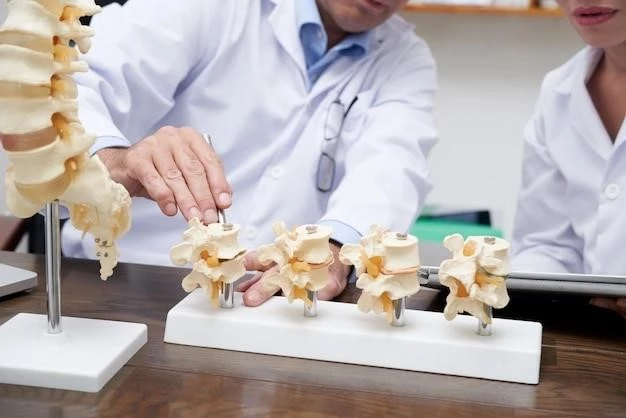Introduction
Spinal muscular atrophy with lower extremity predominance 1 (SMALED1) is an extremely rare neuromuscular disorder characterized by severe progressive muscle atrophy.
Spinal Muscular Atrophy with Lower Extremity Predominance 1 (SMALED1) is an extremely rare neuromuscular disorder characterized by severe progressive muscle atrophy, typically affecting the lower limbs. SMALED1 is an autosomal dominant condition caused by mutations in the DYNC1H1 or BICD2 genes, leading to motor neuron degeneration with a predominant impact on the lower extremities. Patients often present with early-onset weakness in the legs and may experience varying degrees of muscle wasting, particularly in the thigh muscles. The diagnosis of SMALED1 is challenging due to its rarity and unique clinical manifestations, making it essential for healthcare providers to have a high index of suspicion for accurate identification and management of this condition.
Overview of Spinal Muscular Atrophy with Lower Extremity Predominance 1

Spinal muscular atrophy with lower extremity predominance 1 (SMALED1) is an extremely rare neuromuscular disorder characterized by severe progressive muscle atrophy, primarily impacting the lower limbs.
Manifestation of SMALED1
Spinal Muscular Atrophy with Lower Extremity Predominance 1 (SMALED1) is an autosomal dominant condition characterized by congenital or early childhood onset, motor neuron degeneration, and lower limb-predominant weakness. Mutations in the DYNC1H1 or BICD2 genes lead to severe progressive muscle atrophy, particularly impacting the lower limbs. Patients typically present with weakness in the legs and experience varying degrees of muscle wasting, especially in the thigh muscles. Early diagnosis and treatment interventions are crucial in managing the symptoms and improving the quality of life for individuals affected by SMALED1.
Comparison with Other Types of SMA
Spinal Muscular Atrophy with Lower Extremity Predominance 1 (SMALED1), unlike other types of spinal muscular atrophy, exhibits a unique autosomal dominant inheritance pattern and primarily affects the lower limbs. This distinguishes SMALED1 from other forms of SMA, such as X-linked infantile spinal muscular atrophy and spinal muscular atrophy with respiratory distress type 1, which are caused by mutations in different genes. The distinct clinical manifestations and genetic basis of SMALED1 set it apart from other types of spinal muscular atrophy, highlighting the importance of accurate diagnosis and tailored treatment approaches for patients with this rare condition.
Role of DYNC1H1 Gene Mutations
The DYNC1H1 gene mutations are associated with spinal muscular atrophy with lower extremity predominance 1 (SMALED1), contributing to motor neuron degeneration primarily affecting the lower limbs.
BICD2 Gene Mutations in SMALED
The BICD2 gene mutations play a crucial role in the development of spinal muscular atrophy with lower extremity predominance 1 (SMALED1), a rare autosomal dominant neuromuscular disorder characterized by motor neuron degeneration predominantly affecting the lower limbs.
BICD2 Gene Mutations in SMALED1
Spinal Muscular Atrophy with Lower Extremity Predominance 1 (SMALED1) is primarily caused by heterozygous mutations in the BICD2 gene, leading to the unique clinical features of this rare autosomal dominant neuromuscular disorder. These mutations play a critical role in the pathogenesis of SMALED1, contributing to motor neuron degeneration predominantly affecting the lower limbs and emphasizing the importance of genetic testing for accurate diagnosis and management of affected individuals.
Diagnosing Spinal Muscular Atrophy with Lower Extremity Predominance 1 (SMALED1) typically involves genetic testing to identify mutations in the DYNC1H1 or BICD2 genes. Additionally, clinical evaluations and electromyography studies may assist in confirming the diagnosis.
Establishing accurate prognostic factors is crucial for determining disease progression and tailoring treatment strategies for individuals diagnosed with Spinal Muscular Atrophy with Lower Extremity Predominance 1 (SMALED1). Factors such as genetic mutations, age of onset, and the extent of motor neuron degeneration play essential roles in predicting the clinical course and outcomes for patients with SMALED1.
Diagnostic Approaches for SMALED1
Diagnosing Spinal Muscular Atrophy with Lower Extremity Predominance 1 (SMALED1) typically involves genetic testing to identify mutations in the DYNC1H1 or BICD2 genes. Additionally, clinical evaluations and electromyography studies may assist in confirming the diagnosis.

Current Therapeutic Interventions for SMALED1
Current therapeutic interventions for spinal muscular atrophy with lower extremity predominance 1 (SMALED1) focus on managing symptoms and optimizing quality of life for affected individuals.
Prognostic Factors in Patients with SMALED1
Establishing accurate prognostic factors is crucial for determining disease progression and tailoring treatment strategies for individuals diagnosed with Spinal Muscular Atrophy with Lower Extremity Predominance 1 (SMALED1). Factors such as genetic mutations, age of onset, and the extent of motor neuron degeneration play essential roles in predicting the clinical course and outcomes for patients with SMALED1.
Research Advances in SMALED1 Treatment
Recent advancements in the treatment of Spinal Muscular Atrophy with Lower Extremity Predominance 1 (SMALED1) have focused on developing targeted therapeutic strategies to address the unique clinical features of this rare autosomal dominant neuromuscular disorder. Emerging research aims to improve disease management, enhance patient outcomes, and explore innovative interventions to mitigate the progression of SMALED1.
There have been documented cases of Spinal Muscular Atrophy with Lower Extremity Predominance 1 (SMALED1) presenting with unique clinical characteristics and genetic mutations.
Impact of De Novo BICD2 Variant in a Japanese Patient
A case study highlighting the impact of a de novo BICD2 variant in a Japanese individual with Spinal Muscular Atrophy with Lower Extremity Predominance 1 (SMALED1) showcases the clinical significance of genetic mutations in the presentation and management of this rare autosomal dominant neuromuscular disorder.
Reported Cases of SMALED1
There have been documented cases of Spinal Muscular Atrophy with Lower Extremity Predominance 1 (SMALED1) presenting with unique clinical characteristics and genetic mutations.
Spinal Muscular Atrophy with Lower Extremity Predominance 1 (SMALED1) is an extremely rare neuromuscular disorder with a low prevalence and limited reported cases worldwide.
Prevalence and Incidence of SMALED1
Spinal Muscular Atrophy with Lower Extremity Predominance 1 (SMALED1) is an extremely rare neuromuscular disorder with limited reported cases worldwide, indicating a low prevalence and incidence rate.
The pathophysiology of Spinal Muscular Atrophy with Lower Extremity Predominance 1 involves the degeneration of motor neurons, particularly affecting the lower limbs due to genetic mutations.
Mechanism of Motor Neuron Degeneration in SMALED1
The pathophysiology of Spinal Muscular Atrophy with Lower Extremity Predominance 1 involves the degeneration of motor neurons, particularly affecting the lower limbs due to genetic mutations.
Managing symptoms of Spinal Muscular Atrophy with Lower Extremity Predominance 1 (SMALED1) involves comprehensive care plans tailored to address the unique challenges faced by individuals affected by this rare neuromuscular disorder.
Management of Spinal Muscular Atrophy with Lower Extremity Predominance 1 (SMALED1) involves tailored care plans addressing specific challenges of this rare neuromuscular disorder.
Strategies for Managing Symptoms of SMALED1
Management of Spinal Muscular Atrophy with Lower Extremity Predominance 1 (SMALED1) involves a multidisciplinary care approach٫ where healthcare professionals from various specialties collaborate to address the complex needs of patients and provide comprehensive treatment and support.
Patients with Spinal Muscular Atrophy with Lower Extremity Predominance 1 (SMALED1) encounter various challenges related to muscle weakness٫ mobility limitations٫ and the progressive nature of the disease٫ impacting daily activities and overall quality of life.
Challenges Faced by Patients with SMALED1
Patients with Spinal Muscular Atrophy with Lower Extremity Predominance 1 (SMALED1) encounter various challenges related to muscle weakness٫ mobility limitations٫ and the progressive nature of the disease٫ impacting daily activities and overall quality of life.
Research in Spinal Muscular Atrophy with Lower Extremity Predominance 1 (SMALED1) focuses on understanding disease mechanisms, developing targeted therapies, and improving diagnostic and management approaches for better patient outcomes.
Ongoing Research Areas in SMALED1
Constant research efforts in Spinal Muscular Atrophy with Lower Extremity Predominance 1 (SMALED1) are focused on elucidating disease mechanisms, developing novel treatment modalities, and enhancing diagnostic and management strategies to improve patient outcomes and quality of life.
The rare autosomal dominant neuromuscular disorder, Spinal Muscular Atrophy with Lower Extremity Predominance 1 (SMALED1), involves degeneration of motor neurons predominantly affecting the lower limbs. Ongoing research aims to enhance treatment strategies for better patient outcomes.
Summary of Key Points on SMALED1
Spinal Muscular Atrophy with Lower Extremity Predominance 1 (SMALED1) is a rare autosomal dominant neuromuscular disorder characterized by motor neuron degeneration predominantly affecting the lower limbs. Ongoing research aims to enhance treatment strategies for improved patient outcomes and quality of life. Genetic mutations in genes such as DYNC1H1 and BICD2 play a significant role in the pathogenesis of SMALED1.
